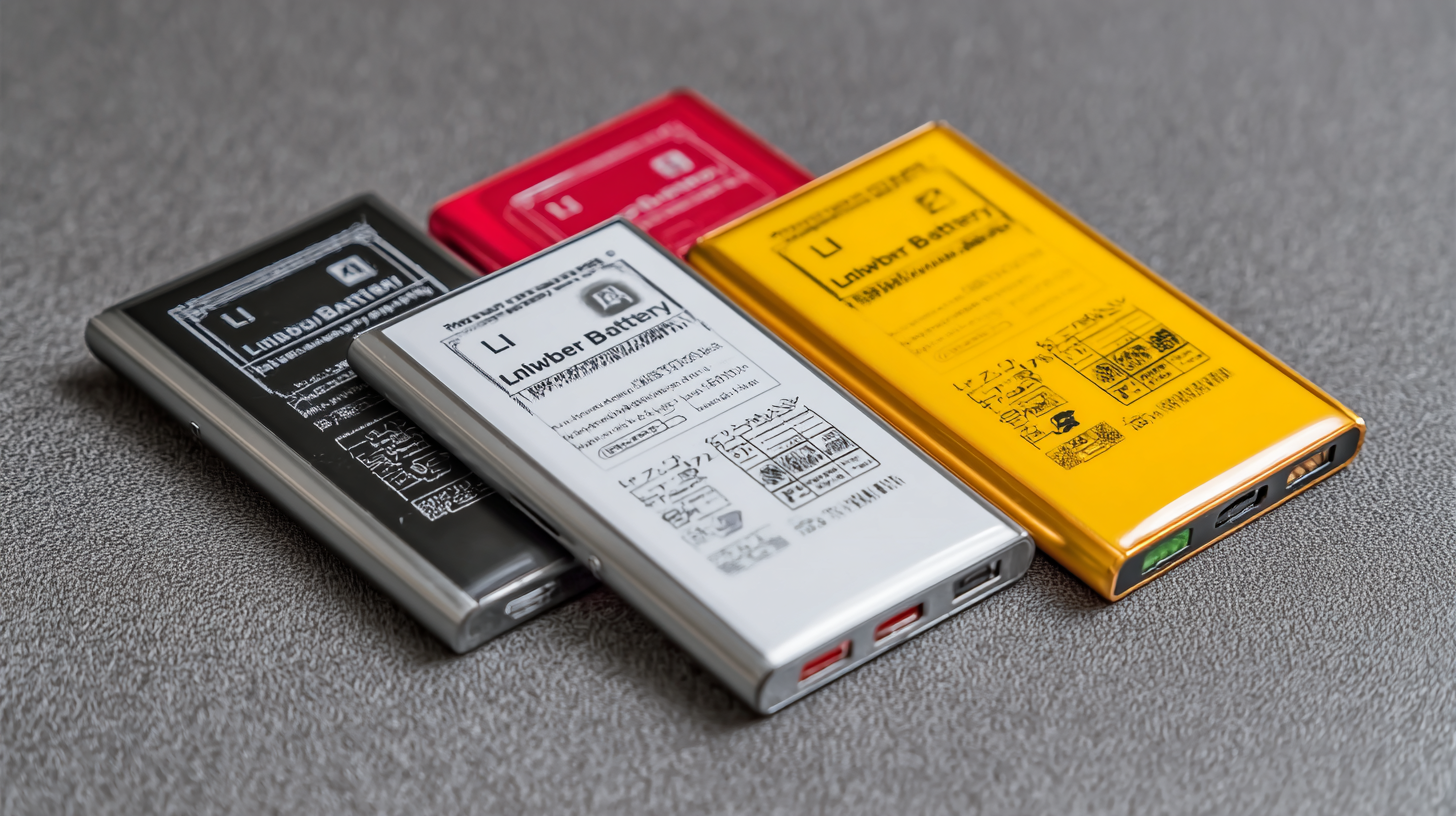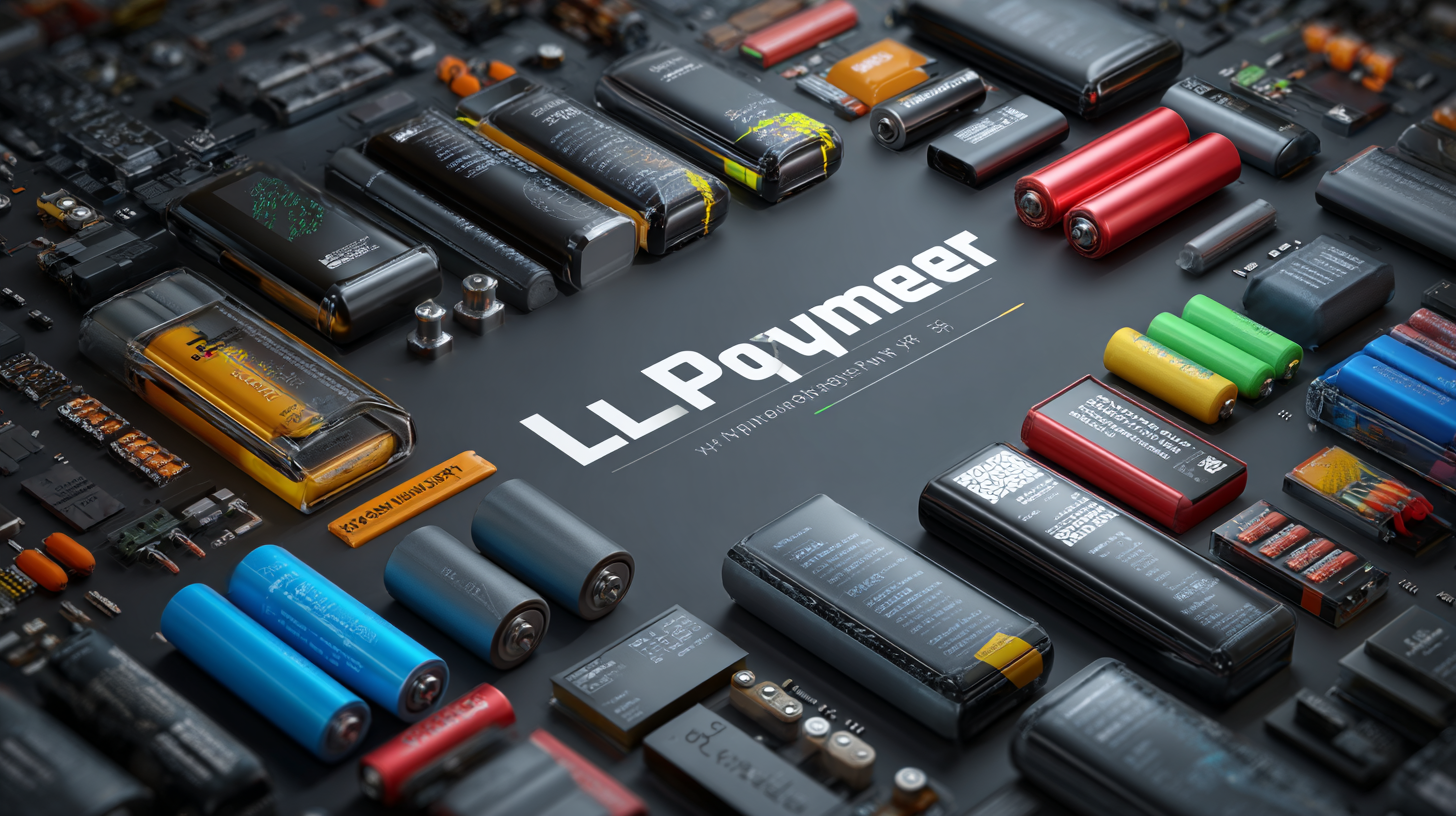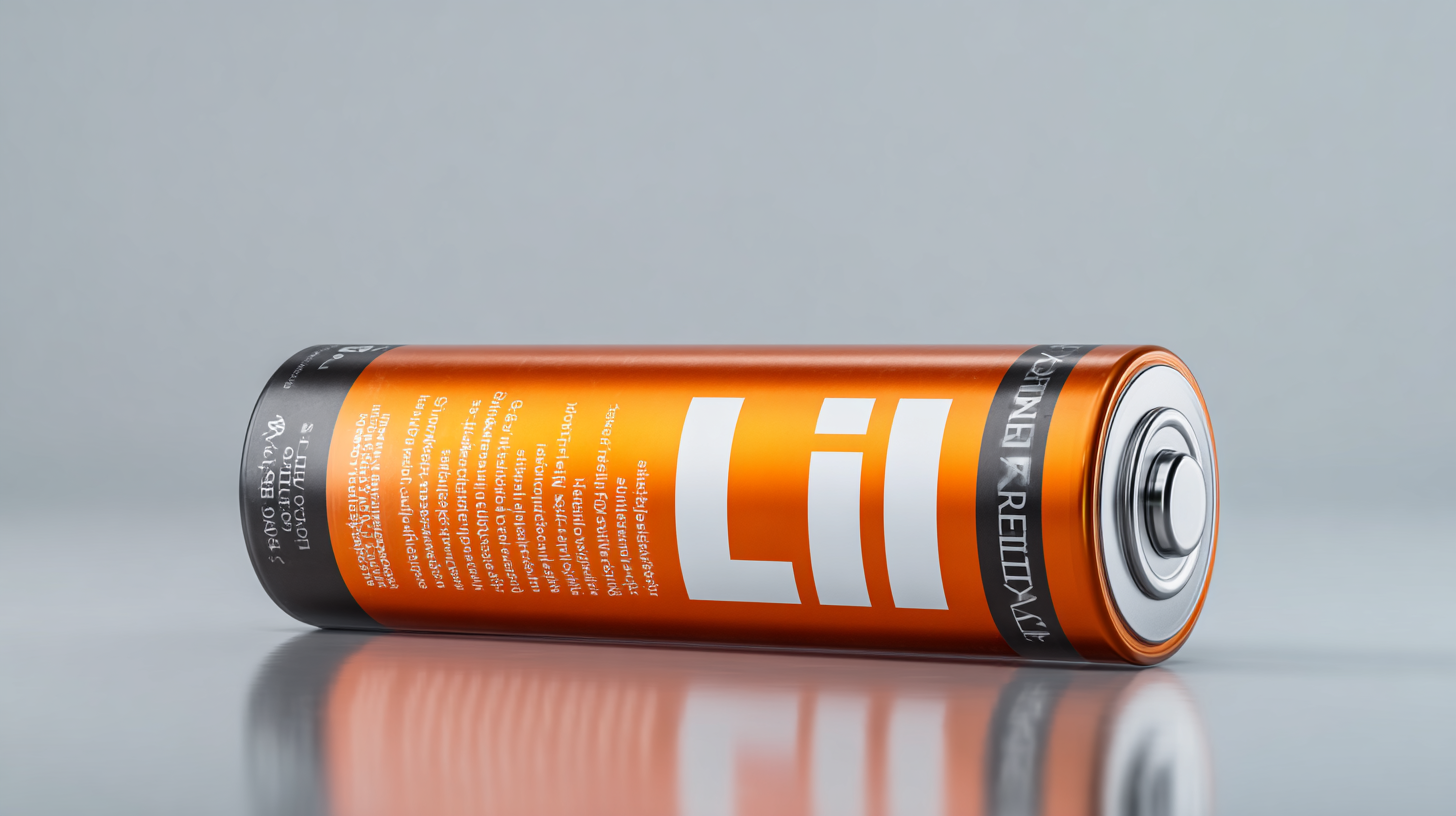
5 Essential Tips for Choosing the Best Li Polymer Battery for Your Devices
In recent years, the demand for Li Polymer Batteries has surged significantly, driven by the rapid advancements in portable technology and electric vehicles. According to a market research report by Mordor Intelligence, the global lithium polymer battery market is projected to grow at a CAGR of 20.3% between 2021 and 2026, reflecting the increasing reliance on portable electronic devices and the growing adoption of renewable energy sources. These lightweight and flexible power solutions not only provide superior energy density compared to traditional lithium-ion batteries but also offer enhanced safety features, making them a preferred choice for manufacturers across various industries. As consumers and companies alike seek to optimize performance and reliability in their products, understanding the key factors in selecting the right Li Polymer Battery becomes essential for achieving operational excellence and long-term sustainability.

Understanding Li Polymer Battery Basics: Chemistry and Performance Metrics
When selecting a Li Polymer (LiPo) battery, understanding the fundamental chemistry and performance metrics is crucial. LiPo batteries are known for their high energy density, which can reach up to 250 Wh/kg compared to traditional lithium-ion batteries. This high energy density allows for lighter batteries without compromising power, making them ideal for portable devices. According to a report from MarketsandMarkets, the global LiPo battery market is projected to grow at a CAGR of 18.5% from 2021 to 2026, highlighting increased demand for efficient power solutions across various applications.
Performance metrics such as discharge rate and cycle life are also essential to consider. A typical LiPo battery can provide discharge rates from 1C to 100C, meaning it can deliver one to one hundred times its capacity in amperes. This capability is particularly important for high-drain devices like drones and RC cars. Additionally, the cycle life of LiPo batteries generally ranges between 300 to 500 cycles; however, this can vary depending on usage and proper charging practices. Understanding these metrics enables consumers to make informed choices that align with their specific energy needs, ensuring they select the best Li Polymer battery for optimal device performance.
Battery Capacity Comparison: Li Polymer vs. Other Battery Types
Evaluating Capacity and Discharge Rates: What You Need to Know
When selecting a Li Polymer (LiPo) battery for your devices, understanding capacity and discharge rates is crucial. Capacity, measured in milliampere-hours (mAh), determines how long your device can run before needing a recharge. According to industry reports, a LiPo battery with a capacity of 2000mAh can power a device for an average of 4-10 hours, depending on usage. Therefore, it’s essential to assess your device's power consumption needs to choose a battery that can deliver adequate performance throughout the expected usage period.
Discharge rates, indicated in C-ratings, indicate how quickly a battery can safely release energy. For high-performance devices, such as drones or high-end smartphones, a higher C-rating is essential for ensuring that the battery can sustain the necessary power output without overheating or risking damage. For instance, a battery rated at 30C can deliver 30 times its capacity in amperes, making it suitable for demanding applications. As the wireless network industry evolves rapidly, the importance of selecting the right batteries aligns with the increased demand for devices that perform optimally under strenuous conditions. Evaluating these factors alongside industry advancements will empower consumers to make informed choices in a competitive market.

Key Indicators of Battery Lifespan: Cycle Counts and Maintenance Tips
When selecting a Li Polymer battery, understanding its lifespan indicators is crucial. One of the primary factors that influence this is the cycle count, which refers to the number of complete charge and discharge cycles a battery can undergo before its capacity significantly diminishes. A higher cycle count generally indicates a longer lifespan and improved durability, making it essential to look for batteries that promise a substantial number of cycles. It's advisable to choose batteries rated for at least 300-500 cycles for typical consumer devices, ensuring they can handle daily usage without quick degradation.
In addition to cycle counts, proper maintenance can extend the life of your Li Polymer battery. Keeping the battery at a moderate temperature is essential; extreme heat or cold can adversely affect its performance. Regularly monitoring the battery level and avoiding complete discharges ensures that the battery remains healthy.
Implementing these maintenance tips not only maximizes the lifespan of the battery but also optimizes its performance, allowing users to enjoy their devices with greater reliability over time.
Comparing Manufacturing Standards: How to Identify Quality Sources
When selecting a Li Polymer battery for your devices, it's crucial to consider the manufacturing standards from which these batteries originate. High-quality batteries are often produced by manufacturers who comply with international safety and quality certifications such as ISO 9001 or IEC standards. These certifications indicate that the manufacturer adheres to specific guidelines that ensure the reliability and performance of their products. By researching and verifying these compliance standards, consumers can better ensure that they are purchasing batteries that are safe and efficient for their devices.
Another key aspect in identifying quality sources is examining the materials used in battery production. Premium Li Polymer batteries typically incorporate high-grade components that enhance durability and performance. Manufacturers who are transparent about their sourcing processes and provide detailed specifications about their materials are more likely to deliver reliable products. Look for companies that have a strong reputation in the industry and offer warranties or guarantees on their batteries, as this often reflects their confidence in their manufacturing standards and commitment to customer satisfaction.
5 Essential Tips for Choosing the Best Li Polymer Battery for Your Devices
| Feature | Description | Importance | Manufacturing Standards |
|---|---|---|---|
| Capacity | Measured in mAh, indicates how much energy the battery can store. | High | IEC 62133, UL 2054 |
| Voltage | Nominal voltage affects the performance in electronic devices. | High | ISO 9001, CE Certification |
| Cycle Life | Number of complete charge/discharge cycles the battery can sustain. | Medium | ASTM D7868 |
| Temperature Range | Operating temperature affects performance and safety. | High | IEC 62133, UN 38.3 |
| Safety Features | Includes mechanisms to prevent overheating and short-circuiting. | Very High | UL 1642, IEC 62619 |
Cost-Benefit Analysis: Investing in Reliable Li Polymer Batteries for Longevity
When investing in lithium polymer (LiPo) batteries for various devices, a thorough cost-benefit analysis is crucial for ensuring longevity and reliability. One key consideration is the type of battery chemistry, with options such as ternary polymer Li batteries and LifePo4 batteries being widely recognized for their varied applications. The choice between these types can significantly impact the performance and life cycle of consumer electronics, electric vehicles (EVs), and energy storage systems.

Looking toward 2033, the battery market is expected to experience substantial growth, driven by the increasing demand for electric vehicles and the expansion of drone technology. The global drone battery market is projected to reach approximately $1.27 billion by 2033, demonstrating a compound annual growth rate of 7.61% during the forecast period. Additionally, the solid-state battery market is forecasted to expand dramatically, from $2.43 billion in 2024 to an impressive $95.89 billion by 2032, highlighting the shift towards advanced battery technologies that promise greater efficiency and safety. Understanding these trends and making informed choices about battery types can help consumers and businesses maximize their investments for future applications.
